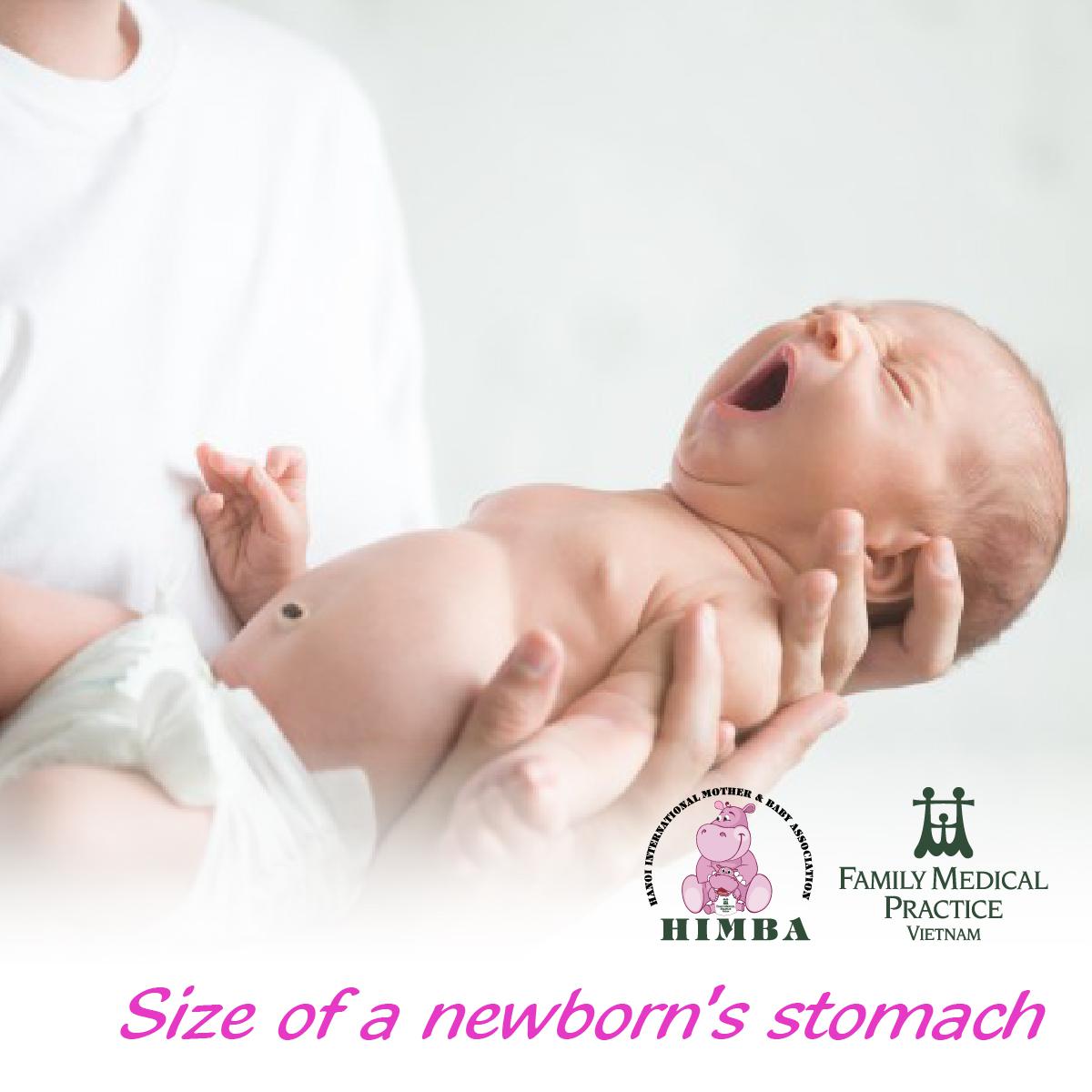[Infant Feeding] Size of a newborn's stomach

[HIMBA] Infant Feeding: Size of a baby’s stomach
Often brand new mothers get told… your baby seems to be on the breast every hour… they must be starving and not getting enough!
When you understand the size of a newborns stomach, this becomes very clear why this behavior is happening. It is the size of a marble with a 5-7ml capacity!
Babies in the first 24 hours need to be skin to skin for as long as possible, learning to navigate to the breast, suckle and practice as much as possible. This will activate the breast and milk cells to give you the best chance for milk production.
By day 3 your baby’s stomach is the size of a walnut. Keep letting your baby feed as often as possible!
By week 1 your baby’s stomach is like an apricot and can hold about 30-60mls per feed.
By 1 month, your baby’s stomach is about the size of a chicken egg. It can hold about 80-150mls per feed. It will begin to regulate milk production and will rely more on supply and demand.
From one month, the same amount of milk is produced until 6 months. This surprises many mothers, the nutritional content will adapt but the volume will not alter significantly now until after 6 months.
Formula fed babies may feed more due to parents reading the instructions on formula packs- however formula companies want to sell formula… and many babies suffer with colic and reflux symptoms due to having their tummies stretched further than they need!
Watch your baby, read their cues and feed them when they want and how much they want. Consider sitting your baby up so gravity doesn’t decide the feed.
If your baby tells you when they want a feed, is content between feeds, is gaining weight well, producing lots of wet and dirty nappies, then you are likely to be feeding the right amount. Always consult a medical professional for review and support with feeding.
Sources: Unicef Baby Friendly/ NHS / CDC
https://bmcpediatr.biomedcentral.com/articles/10.1186/s12887-020-1982-9#ref-CR11
https://onlinelibrary.wiley.com/doi/abs/10.1111/apa.12291
Author: Abigail Laurie Registered Midwife and Registered Specialist Public Health Nurse, United Kingdom.
 We use cookies on this website to enhance your user experience
We use cookies on this website to enhance your user experience